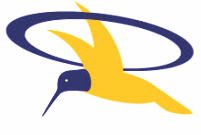Female flight attendants became so popular that they displaced their male counterparts.

Pan Amwas the first airline to employ men as flight attendants, but Boeing Air Transport was the first airline to employ women as flight attendants in 1930. At first, the terms ‘steward’ and ‘stewardess’ were used in the industry, before the gender-neutral term ‘flight attendant’ was adopted. ‘Stewardess’ is used in this article to refer to the historic profession before the 1970s.
Today, both men and women work as flight attendants, but this is thanks to pioneering efforts by women like Ellen Church, Thelma Jean Harman, Ruth Carol Taylor, and others who worked for gender equality in the role. Efforts to make aviation careers equal for men and women have included the pilot profession as well, though it is still male-dominated. The world has come a long way over the last 100 years of flying (e.g., nowwomen can apply for all roles in the US Air Force).
From all-male to all-female
It may come as a surprise to many, but the earliest origin of stewardesses is nursing. Expected gender roles in some jobs have changed over time.Shakespeare’s Globestates that in Elizabethian England, all characters in Shakespeare’s plays were played by males, with boys playing female characters. Women were forbidden from the stage until the 1660s. Similarly, the first air stewards were only men. Soon, women proved so popular that the job became associated with women (it wasn’t until the 1980s and 1990s that more males were once again accepted for the job).

For a period of time, women were synonymous with the flight attendant profession. TheNational Air and Space Museumstates that part of the motive for employing women as flight attendants was that they could be paid lower wages than their male counterparts at the time. Another motive was that attractive young women were used for airline marketing to attract customers. This gradually changed in the latter half of the 20th century as gender equality became more equal in the profession.
Stewardess and flight attendantuniformshave taken a different fashion and development path than pilot uniforms. While pilot uniforms are virtually the same worldwide and have barely changed since Pan Am’s flying boats, flight attendant uniforms are varied and constantly changing. The first stewardess’s uniform was dark green with a green and gray wool cape.

Ellen Church & Original Eight
Ellen Church became the world’s first stewardess. Ellen Church hailed from Iowa and dreamed of becoming a pilot but could not, as it was impossible for women at the time. Instead of pursuing a pilot career, she approached Boeing Air Transport (later United Air Lines) and pitched the novel idea of airlines placing nurses aboard airliners. Flying was dangerous, and airlines sought ways to alleviate people’s nerves; this would be a motive forPan Am to dress pilots in professional, authoritative-looking sea captain-derived uniforms.
Ellen Church successfully convinced Boeing Air Transport that women nurses on flights would ease passengers’ fears. She was granted the job and flew as the first stewardess between Oakland and Chicago. Ellen Church also developed the training program and the job description for the new profession for the first female stewardesses (dubbed the “Original Eight”). Her flying career only lasted 18 months, as she was injured in a car accident. She later completed her college degree and returned to nursing.

Another benefit for airlines is that stewardesses relieve pressure on the co-pilots. Previously, co-pilots were responsible for helping fly the aircraft and assisting the passengers. It wasn’t long before the novel idea became the industry standard repeated by airlines around the world.
Thelma Jean Harman
The National Air and Space Museum considers Thelma Jean Harman the first flight attendant. In 1934, after graduating from Bethany Hospital School of Nursing, Harman got a job working forTrans World Airlines(TWA). TWA hired her to design a hostess program for their flights. Harman set about interviewing registered nurses for the job and helped select the first uniforms. Harman went on to become a flight instructor and regional chief hostess.
“Passengers may also have been more comfortable with women in this role because women primarily performed caretaking and hospitality work in American society.” National Air and
Space Museum

Thelma Harman enjoyed a long career in aviation and saw it develop from a fledgling industry to the jet age of the 1960s. She started her career in a 14-seat Douglas DC-2, but by the time she retired in the 1960s, the jet age had dawned, and everyone had forgotten the time when stewards, not stewardesses, were the in-flight assistants.
Ruth Carol Taylor
Ruth Carol Taylor was another notable early flight attendant as the first African American. She graduated from Bellevue School of Nursing in 1955 and was employed by Mohawk Airlines in 1958. She took the job at Mohawk Airlines after being rejected by Trans World Airlines (which only employed white women as flight attendants at the time). However, her career was cut short, and she was forced to resign six months after getting married. The policy at the time was for stewardesses to be single.
Source: https://simpleflying.com/first-female-flight-attendants-history/

